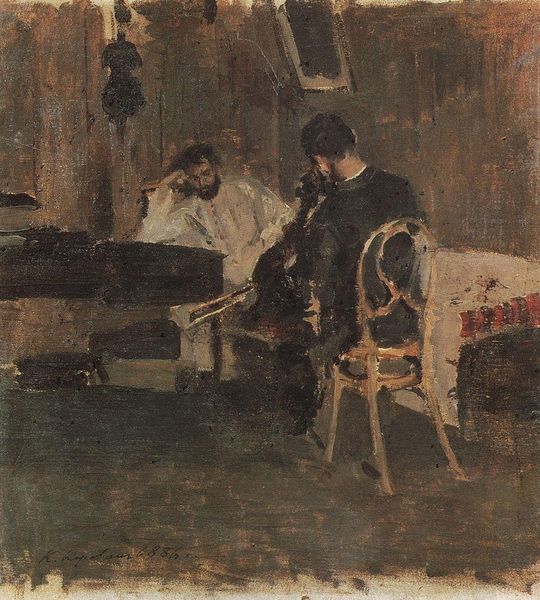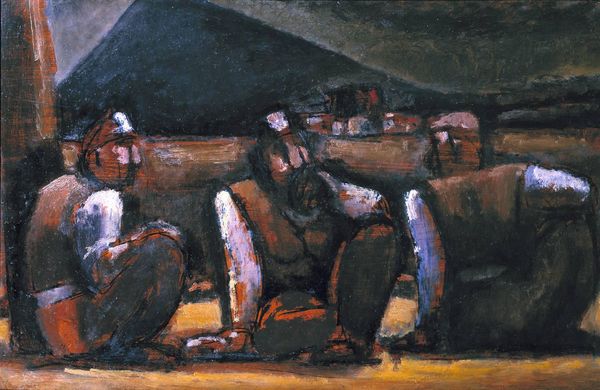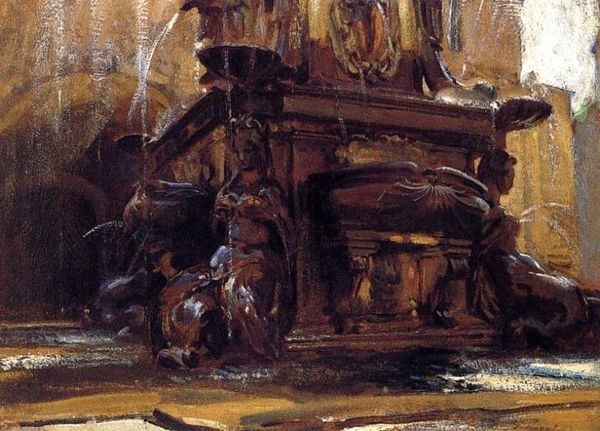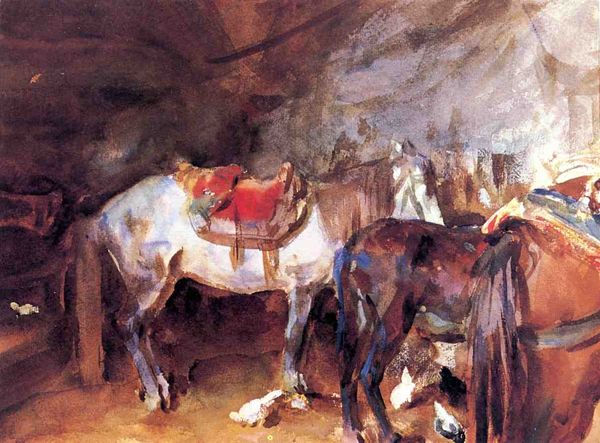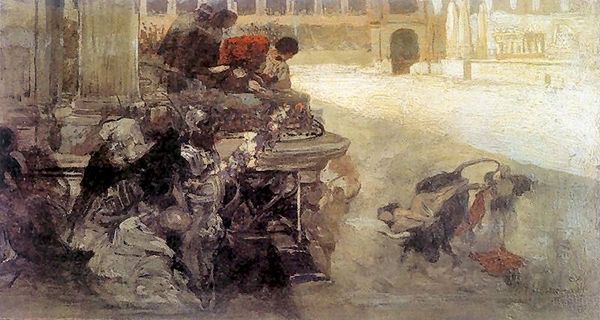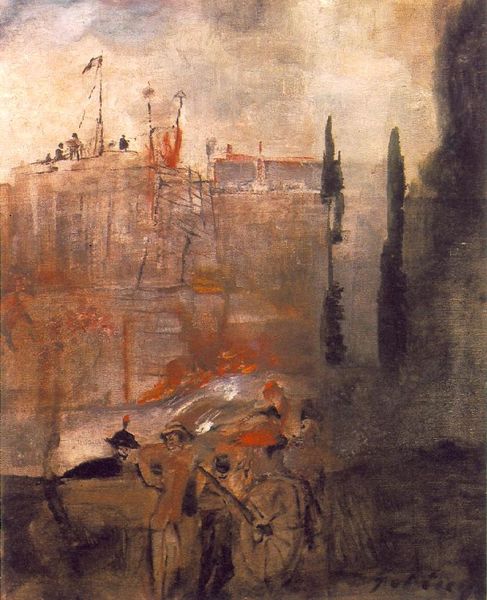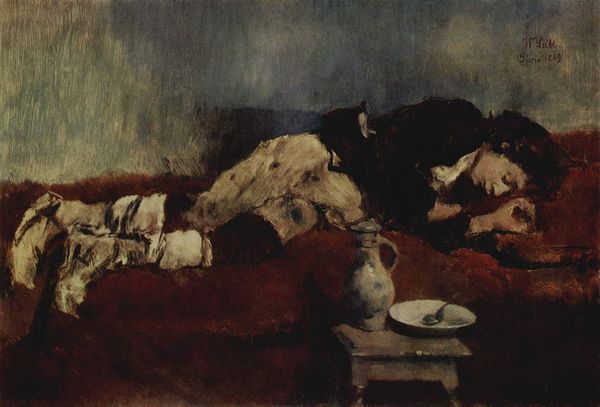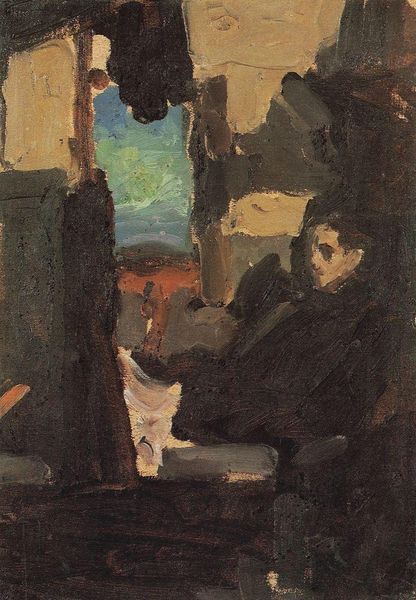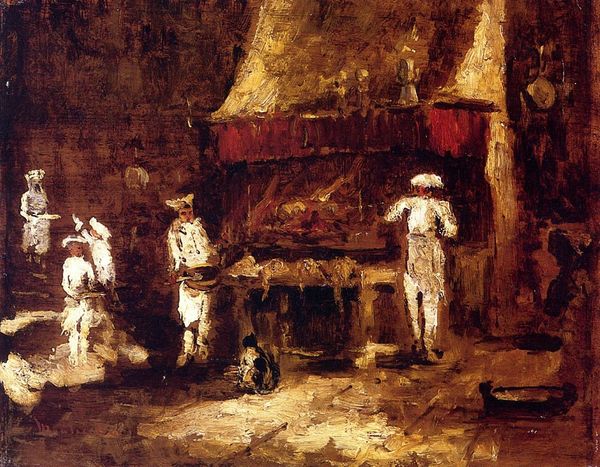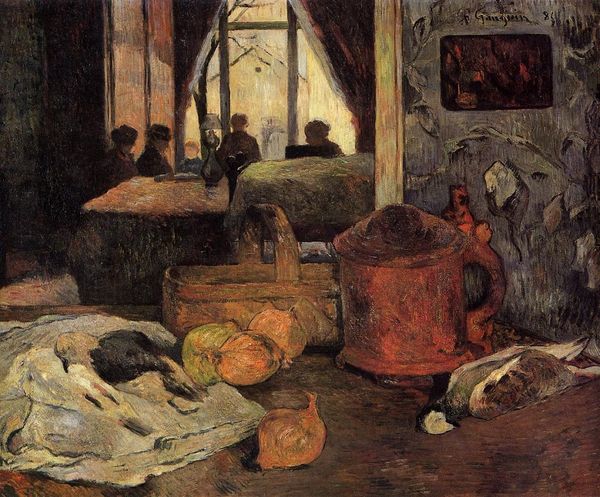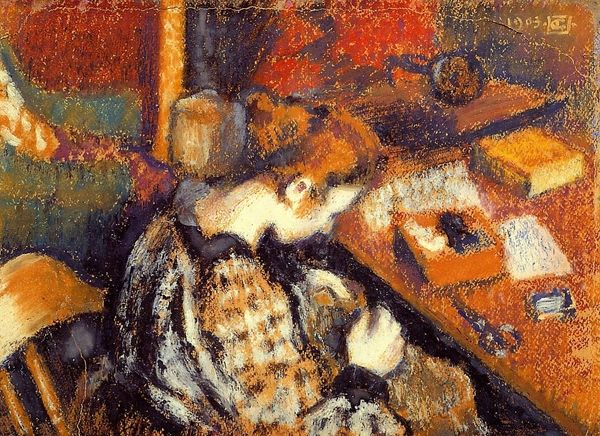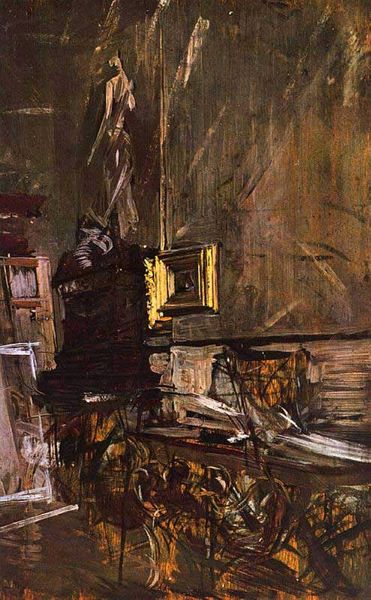
painting, oil-paint, impasto
#
narrative-art
#
painting
#
impressionism
#
oil-paint
#
painted
#
possibly oil pastel
#
impasto
#
underpainting
#
paint stroke
#
painting painterly
Dimensions: 14 x 23 cm
Copyright: Public domain
Editor: Here we have Ilya Repin's "Interior (etude)" from 1883, an oil painting currently housed in the Tretyakov Gallery in Moscow. I find its sketch-like quality captivating. The objects almost dissolve into the atmosphere. What can you tell me about this piece? Curator: It's crucial to understand Repin's historical context. Russia in the late 19th century was a society grappling with immense social upheaval, torn between tradition and modernization. Does this "dissolving" effect you noticed perhaps reflect this instability, the breakdown of traditional forms in both art and society? What do you make of the red tones dominating the scene? Editor: It creates a sense of warmth but also unease, like flickering candlelight. It's not necessarily a calming domestic scene. Curator: Exactly! Repin wasn’t merely depicting an interior. He was part of the Peredvizhniki movement, also known as the Wanderers, who challenged the academic art establishment. They believed art should serve a social purpose, engaging with contemporary issues and the lives of ordinary people. The intensity of the red, combined with the "dissolving" forms, could symbolize the anxieties of a society in flux, perhaps reflecting on social unrest or a critique of the opulent lives of the elite. Who inhabited this interior and to what ends? Whose gaze are we adopting as the viewers? Editor: I see what you mean. Considering that, the almost unfinished quality becomes even more potent, less about a literal representation and more about capturing a feeling. Curator: Precisely. And understanding that this is an “etude,” or a study, allows us to consider the art making process, and Repin’s role as a witness and provocateur of a changing social and political landscape. Editor: This has given me a whole new way to consider the role of the artist in the making of history, portraying a domestic setting while challenging tradition. Thank you. Curator: My pleasure. Keep questioning those surfaces! There are many possible angles.
Comments
No comments
Be the first to comment and join the conversation on the ultimate creative platform.
